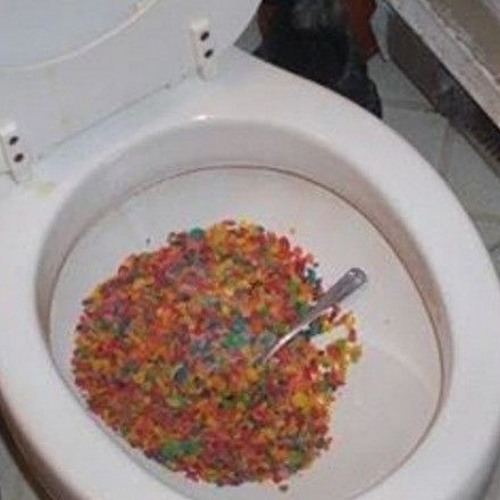They are making a number of good annotation on Is it safe to flush food (especially rice) down the toilet? as a whole in this great article directly below.

Introduction
Many people are frequently confronted with the problem of what to do with food waste, especially when it concerns leftovers or scraps. One typical question that occurs is whether it's okay to purge food down the commode. In this article, we'll look into the reasons individuals might think about flushing food, the effects of doing so, and alternative methods for appropriate disposal.
Reasons that individuals could think about purging food
Absence of recognition
Some individuals might not be aware of the possible harm caused by flushing food down the commode. They may mistakenly believe that it's a harmless practice.
Convenience
Purging food down the toilet might feel like a quick and easy solution to disposing of undesirable scraps, specifically when there's no nearby garbage can offered.
Laziness
In many cases, people may simply choose to flush food out of sheer idleness, without thinking about the effects of their actions.
Effects of flushing food down the commode
Environmental effect
Food waste that ends up in rivers can contribute to air pollution and damage water ecological communities. Additionally, the water used to purge food can strain water sources.
Pipes concerns
Purging food can bring about blocked pipes and drains pipes, creating expensive plumbing repair services and inconveniences.
Types of food that should not be purged
Fibrous foods
Foods with fibrous appearances such as celery or corn husks can obtain entangled in pipelines and cause blockages.
Starchy foods
Starchy foods like pasta and rice can soak up water and swell, causing clogs in pipes.
Oils and fats
Greasy foods like bacon or food preparation oils should never be purged down the commode as they can strengthen and cause blockages.
Proper disposal approaches for food waste
Utilizing a waste disposal unit
For homes geared up with waste disposal unit, food scraps can be ground up and flushed via the pipes system. Nonetheless, not all foods are suitable for disposal in this way.
Recycling
Particular food packaging products can be reused, lowering waste and minimizing environmental influence.
Composting
Composting is an environment-friendly method to take care of food waste. Organic products can be composted and made use of to enhance dirt for gardening.
The relevance of correct waste administration
Lowering ecological damage
Proper waste administration practices, such as composting and recycling, aid reduce contamination and maintain natural deposits for future generations.
Safeguarding plumbing systems
By preventing the method of flushing food down the commode, property owners can protect against pricey plumbing repair work and maintain the integrity of their plumbing systems.
Final thought
In conclusion, while it might be tempting to flush food down the commode for benefit, it's important to understand the potential repercussions of this activity. By adopting proper waste monitoring practices and dealing with food waste responsibly, people can add to much healthier plumbing systems and a cleaner environment for all.
FLUSH FOOD DOWN THE TOILET?
FLUSHING FOOD CAN CAUSE BLOCKED DRAINS IN YOUR HOME
All of the plumbing fixtures in your home are connected to the same sewer pipe outside of your home. This outdoor sewer pipe is responsible for transporting all the wastewater from your home to the Council sewer mains. Even small pieces of food that go down the kitchen sink can cause problems for your sewer. It should therefore be obvious that flushing larger bits of food, such as meat, risks a clog in either the toilet itself or the sewer pipes. Flushing greasy food is even more problematic because oil coagulates when it cools, coating the interior lining of your pipes.
THE TOILET IS NOT A BIN
Food isn’t the only thing that people shouldn’t be flushing down the toilet. People use the toilet to dispose of all kinds of things such as tampons, makeup wipes, dental floss, kitty litter and even underwear. Water goes to great lengths to educate residents about the high costs and stress placed on wastewater treatment systems simply from people flushing the wrong stuff down the toilet. It costs taxpayers millions of dollars each year, and homeowners thousands in blocked drain repairs.
FLUSHING FOOD IS A WASTE OF WATER
Flushing food is a waste of our most precious resource - water. In June this year Level 1 water restrictions were introduced to protect water supply from drought conditions. Much of New South Wales continues to be affected by prolonged drought with recent figures revealing up to 97 per cent of the state remains in drought. Depending on whether you have a single or dual flush toilet, every single flush uses between five and 11 litres of water. In the current climate this is a huge amount of water to be wasting on flushing food that should be placed in the bin (or better yet, the compost).
https://www.jabplumbingsolutions.com.au/blog/can-you-flush-food-down-the-toilet

As an avid reader about Flushing Food Down the Toilet?, I assumed sharing that section was a good idea. In case you enjoyed our article if you please remember to pass it around. Thank you for taking the time to read it.
Instant Quote